|
Jason Moka will assume the duties as Chief Judge for the Cortile Cup in July 2022. by Bernard Martin Pittsburgh, PA. - Jason Moka has been named as the new Chief Judge of the Cortile Cup at the Cortile Italian Car Show that is held each July during the Pittsburgh Vintage Grand Prix.
Jason Moka has been in the automotive industry for over 10 years in sales management and marketing. He is the Marketing Director for the Rohrich Automotive Group and is the creator of the Bentley Auto Show that benefits the Pittsburgh Vintage Grand Prix Charities. Founded in 2019, the Annual Car Show has been hosted by Jason and his team at Pittsburgh Bentley and Maserati of Pittsburgh in Wexford, PA. This fabulous event marks the end of the PVGP Summer Car Show events. In addition to his creation of the show at Rohrich, Jason has been an avid supporter of the Pittsburgh Vintage Grand Prix and the Cortile for more than a decade . Being an enthusiast himself, Jason had the itch to travel to other shows and venture into the world of judging. He is now a member of several auto clubs in the area and is active in planning events for the PVGP. According to Jason, "I'm honored to now be entrusted to be the Chief Judge for the Cortile at the Pittsburgh Vintage Grand Prix." Jason's personal collection includes a 1994 Ferrari 349 Spider, a 1989 Lamborghini Countach and a 1998 Mercedes SL600 Sport. The inception of the Cortile Cup started in 2011 at the recommendation of Steve Barney. Steve was a Senior Judge at the Hilton Head Concours and suggested to Wayne Long that an award for the best cars at the Cortile would add excitement to the event. Wayne Long, the owner of Mid-Atlantic Sports Cars put together awards for the Cortile Cup that summer and has done so every year since. According to Wayne, "After starting the Cortile Cup nearly ten years ago it seemed like is was good time to pass the baton to a new steward of the event. Jason Moka and Maserati of Pittsburgh will be taking the award program forward and I feel it is in very good hands!" "Jason has been taking a more active role over the past few years in both recruiting cars and providing ideas and insights as well as promoting the Cortile to a larger audience. He's helped raise the bar for the exceptional level of cars that have been on our display field these past few years. He's the next generation of leadership within our car community and I can't think of a better person to take the reigns and add to the Provenance of the event that Wayne and his group of judges set down the foundation." said Bernard Martin, the Founder and Managing Director of the Cortile. The “Cortile Cup” is awarded to the most significant or exciting Italian car on display during Saturday’s viewing. In addition to the Cortile Cup Overall Winner award, awards are given for the best-in-class for the following marques: Alfa Romeo, Ferrari, Fiat, Maserati, Lamborghini, and an Italian specialty car.
0 Comments
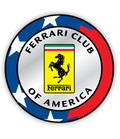 The Ferrari Club of America, Penn-Jersey Region, as invited the Ferrari Club of America Mid Atlantic Region to join them as their members drive from the Eastern side of PA to the West to witness the Pittsburgh Vintage Grand Prix! This will be an informal, "pay as you go event" to allow maximum flexibility and avoid the need to follow a set, prepaid package. Pre-Registraiton fo reh Cortile can be done online at the below button. Pre-Registraion for $125 closes THURSDAY JULY 6, 2017 AT MIDNIGHT. You will still be able to register at the Gate on the 15th and/or 16th for $140 but lunches will close when sold out. The RouteBoth Clubs will be starting from the Harrisburg area at 10:00 AM on Friday, July 14. Ferrari's are free to show up Friday morning, or stay at a local hotel Thursday night to split up the drive! The Ferrari Club will be stopping for lunch along the way, with an optional stop at the Flight 93 Memorial, ending at a hotel near Pittsburgh's Shenley Park, where everything will be happening. Ferrari Club members can enjoy the Cortile and 16 other Car Shows and Pre-race practice laps on Saturday and Vintage Racing on Sunday! The Cortile Cup judging will be on Saturday, giving us a chance to show our cars and maybe win the Pietro Castiglioni Cortile Cup for the best Ferrari! Sunday is race day and Ferrari Club members will be at the Cortile VIP area race side at Turn 9, the Westinghouse Pond, for a private wine tasting. Arrival & Dinner PlansThe plan is to go to the #PVGP "Forbes Avenue of Speed" and have dinner at the Bangkok Balcony, which is in the thick of things. The reservation is at 8:00 on Friday Night July 14, 2017.
On Saturday, FCA will be going to the Cortile, followed by dinner at Mitchell's Fish Market. The reservation there is at 7:30. Please contact Gary Cohen, by email at [email protected] or by phone at 610-283-0864, for more information, cost for the event and/or to sign-up for this event! Wayne Long, Chief Judge and Founder of the Cortile Cup has announced that he has selected a new Judge for the 2017 Cortile Cup Competition. Tom Bungay will be joining the judging team for the 2017 annual event at the Pittsburgh Golf Club on Saturday July15. Tom has been involved with the collector car business for over 40 years. From racing in the early Monterey Historics, to judging at many West Coast events, Tom has been active in all facets of the hobby. Tom is currently an active participant in Historic racing, driving in events from COTA to Lime Rock. In addition, he owns and operates a Legacy Motorcoars, a vintage car dealership in Jacksonville, Florida specializing in 50’s and 60’s European sports cars. A native of Sacramento, California, Tom has been part of the collector car business for over 40 years. Starting with a restoration shop in Sacramento in the late 70’s, Tom moved south to Santa Barbara working with the sales and restoration of Lotus automobiles. This association with Lotus also led to participation in the Monterey Historics for several years. The Monterey Historics, ta premier vintage racing event in the United States, is held yearly at Laguna Seca Raceway in California. In addition to historic racing, Tom has been active in SCCA road racing since 1970, with a few professional outings, including the Can-Am series in 1981 and Pro Sports 2000. Tom also established Bungay Automobile Appraisals over 25 years ago, a very active company in the collector car market. About Legacy Motorcars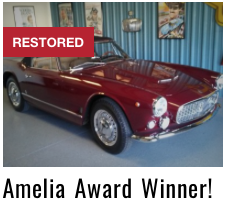 Legacy Motorcars, LLC. was founded by Tom Bungay, a professional in the collector car business with over 35 years of experience. At Legacy Motorcars they are experts at finding that special collector car that you’ve always dreamed of – and they may even have it in stock! Their experience in the collector car market will lead to selecting the finest and most suitable vehicle that meets your needs. Legacy Motorcars also has a pre-owned buyers service, to help you find the exact contemporary vehicle that you want and need, whether it is a slightly used Ferrari or an inexpensive car for your college-bound son or daughter. 2017 Amelia Island Concours d'Elegance Award WinnerAt the 2017 Amelia Island Concours d'Elegance tom's 1961 Maserati 3500GT Vignale Spyder was the winner of “BEST OWNER RESTORED” Trophy.
Each year the Cortile selects a marque or model to highlight for the annual event based upon factors such as historical significance, unique local interest, brand resurgence, etc. Alfa Romeo has been selected as our 2017 Proiettore Macchina! Alfa Romeo has a legendary history, made up of great designers, racers, victories and revolutionary innovations. We have not featured Alfa Romeo since 2010 during the 100th Anniversary celebrations and we're very excited to welcome them back! A Brief History of alfa RomeoAlfa Romeo was founded as A.L.F.A. "Anonima Lombarda Fabbrica Automobili" which stands for "Anonymous Lombard Automobile Factory" on June 24, 1910. In August 1915, the company came under the direction of Neapolitan entrepreneur Nicola Romeo and in 1920, the name of the company was offically changed to Alfa Romeo. Alfa Romeo has competed successfully in Grand Prix motor racing, Formula One, sportscar racing, touring car racing, and rallies over it's illustrious history. It has competed both as a constructor and an engine supplier, usually under the name Alfa Corse or Autodelta, and private entries. The first racing car was made in 1913, three years after the foundation of the company, and Alfa Romeo won the inaugural world championship for Grand Prix cars in 1925. The company became a legendary icon in motorsports when Enzo Ferrari founded the Scuderia Ferrari racing team in 1929 under the Alfa Romeo racing team, before becoming independent in 1939. Alfa Romeo holds the world's title of the most wins of any marque in the world. In 1961 Alfa Romeo started importing cars to the United States and was became a bit of a household name as a result of it's starring role in the move The Graduate. In 1995, Alfa Romeo took a hiatus from the United States market until it was officially confirmed on May 5, 2006 by Fiat CEO Sergio Marchionne they new Alfa Romeo's would once again be sold in the US. North American sales resumed in October 2008, with the launch of the low production 8C Competizione coupe. The next biggest significant milestones in Alfa Romeo's North American return occurred in 2014, with the launch of the more affordable two-seater 4C coupe and most recently the Giulia’s launch quickly followed by the Stelvio SUV. We hope to have several Guilia's on the show field for viewing this summer.
The 2016 Cortile Italian Car show was quite an event.
We started things off with a special presentation by Jeff Mahl on Friday evening about he 1908 New York to Paris Race. It was a lively and very informed presentation about Jeff's great great grandfather's experience racing around the world over 100 years ago. On Saturday we had several very special cars show up for the De Tomaso feature as well as a Stanguellini race car! Take a look at some of the live footage below that we posted on our Facebook Page during the weekend activities for more details.
THE 2016 CORTILE CUP WINNERS CIRCLE
In the Best Italian Speciality Car category that Stanguellini race car took top honors. Our Proiettore Macchina feature winner was a gorgeous white Pantera.
The Ferrari and Lamborghini winners added the iconic Italian sports car colors to the Winners Circle and a very very unique Maserati joined us from Erie, PA to take the final spot in the Winners Circle!
Jeff is the Great Grandson of George Schuster, driver of the American Thomas Flyer and winner of the 1908 New York to Paris Race.
For his victory, George was inducted into the Automotive Hall of Fame beside other racing greats including Andretti, Bugatti, Ferrari, and Shelby.
This car was partially restored in 1970s and spent approximately 20 years in a private museum of an Italian car collector in Miami, Florida.
The current owner purchased the car in 1994 and has spent the last 8 years restoring it to the original racing condition. This was it's first showing since coming out of the garage!
Make plans now to join us next summer at the Cortile when we will feature Alfa Romeo as our 2017 Proiettore Macchina!
On Thursday February 11, 2016 the Pittsburgh Vintage Grand Prix, along with Presenting Sponsor, the Greater Pittsburgh Automobile Dealers Foundation, handed over a $400,000 check to the Autism Society of Pittsburgh and Allegheny Valley School. The large check was initially unveiled and showed $390,000. GPADA president Paul Schimizzi stepped up to the microphone and said that the dealers wanted to round up the donation to $400,000 and promptly took out a marker and generously wrote in the new total of $400,000. This amount is $40,000 more than last year and takes the event over the $4 million mark! These funds were a combined total from the 2015 Grand Prix and the 2016 Auto Show Red Carpet Premiere held that night. The GPADF hosts the party for 1,000 people as the opening preview of the Auto Show. PVGP Executive Director Dan DelBianco accepted on behalf of the Grand Prix and thanked all of the automobile dealers and PVGP volunteers for their yearlong efforts. PVGP Chairman Dan Taylor thanked the ambassadors Anita/Autism Society and Liz/Allegheny Valley School for the inspiration they provide. This is the 9th time in the last 11 years that a new record has been set, bringing our 33 year charity donation total to $4,300,000. This was the second time the check was presented with the help of presenting sponsor GPADF and it was thrilling that the presentation was done at the David Lawrence Convention Center in front of 1,000 attendees. The efforts of our volunteers and sponsors were on display for the entire city to see. Thank you to everybody involved.
A short video of the stunning Lamborghini Miura S that won Best in Show, the Cortile Cup winner, at the Pittsburgh Vintage Grand Prix 2015 during the celebration of the Marques of Italy.
Where it startedIn 1896 the first Italian car was produced. 10 short years later, in 1906, the Targa Florio race was started. The Targa Florio race drove much of the passion of the early Italian Automobile manufacturers who’s names have become the legends of today. The Targa Florio open road endurance race was considered one of the toughest competitions in Europe. The 1906 first running covered 3 laps equalling 277 miles through multiple hairpin curves on treacherous mountain roads, and at heights where severe changes in climate frequently occurred. Then, just as today, automobile manufacturer’s and drivers proved their mettle by winning races. It was out of that heat of racing competition that fueled many of the iconic Italian car marques of today. Alessandro Cagno won the very first Targa Florio in 1906. He was employee #3 at the Fiat automobile company that had formed in 1899. Fiat was one of the first Italian manufacturers to be involved in racing. In 1908, Vincenzo Lancia, finished 2nd at Targa Florio. Lancia had been a race driver for Fiat starting in 1900. In 1906 he had started is own automobile manufacturer and launched his first production car, the Lancia Alpha, in 1908. By 1913, Lancia introduced the the very first complete electrical system as standard equipment on his cars. No doubt that innovation was derived from his racing experience. Although Vincenzo Lancia started his company in 1906, at the 1908 Targa Florio he was driving a Fiat. Not only where the boundaries of the race courses muddy at that time, so where the relationships between those early manufacturers. They shared component parts and people. It's always been a melting pot in that sense... Some have said that the history of Italian car manufacturing reads like a soap opera, with tales of arguments and agreements, of splits, mergers and acquisitions. Indeed, the tales of who worked for whom, who raced for whom and who supplied what for whom are so very intertwined and melded together that it is often difficult to know where any single bit of innovation originated. Enzo Ferrari once said "If you see what a competitor is doing and it is better than what you are doing, you have to surpass them to ensure your cars are better." Italian manufacturer’s where constantly stealing away the best talent or forging new alliances, whether it be engineering, design, production or racing drivers. It’s that hot blooded molten cauldron of racing competition that forged Italian cars from the very beginning.
The Monocoque & Carrozzeria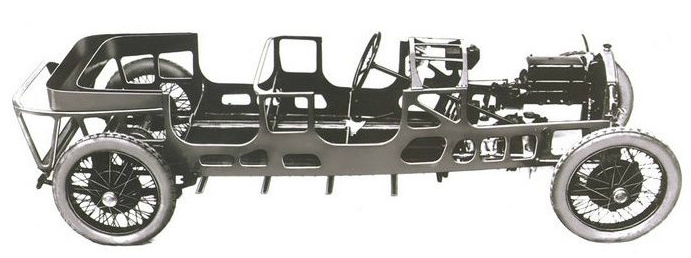 The Lancia Lamda was based around a steel monocoque which eliminated the need for a heavy frame. Most of the body's strength came from the driveshaft tunnel which formed a lightweight backbone for the car. Passengers were seated beside the tunnel allowing for a lower roofline. Typically cars of this period placed all the occupants above the driveshaft which resulted in a high center of balance. In 1922 Lancia introduced the very first monocoque bodied car. That is, the first car that had a body that supported the structural load by using the car's exterior body, rather than an internal frame. The idea of a monocoque was not well received in 1922 even though it is the standard design in Formula One and Indy Car Series racing today. This was primarily because of the use of Carrozzeria. In those early motoring days, you see, when series production did not yet exist, the process of acquiring a new vehicle required two major decisions by a car buyer:
Editor's note: Are you seeing red yet? Quite the soap opera so far eh? We're only in the 1920's! This is part of the reason why the Cortile at the PVGP is a car show about ALL of the Marques of Italy: They are all so very intertwined that it's difficult to appreciate one marque without paying homage to several others at the same time. Keep reading, it gets more interesting... Rosso Red, The Quadrofoglio & Scuderia FerrariWhy Italian Cars are Red In 1904, many national motor clubs banded together to form the Association Internationale des Automobile Clubs Reconnus (AIACR) which is the predecessor to the current FIA governing board which it become known as in 1950. Originally the country colors where: Blue to France, Yellow to Belgium, White to Germany and Red to the USA. Italy “adopted” its famous 'Racing Red' when a red Itala (Itala was a car manufacturer based in Turin, Italy from 1904-1934) won the Peking to Paris race in 1907 but it really wasn’t ‘established’ until the “Rosso Corsa" Alfa Romeo’s began to dominate racing events in the 1920’s. The Quadrifoglio The cloverleaf or “quadrifoglio” has been used on Alfa Romeo cars since 1923. As a friend of Enzo Ferrari, Ugo Sivocci was hired by Alfa Romeo in 1920 to drive in the three-man works team, called "Alfa Corse", with Antonio Ascari and Enzo Ferrari.
Upon Sivocci's death, the quadrifoglio was adopted for all Alfa Romeo racecars. The quadrifoglio emblem 'cloverleaf' has been the symbol of Alfa Romeo racing cars since1923. Since WWII, it has also been used to designate the higher trim models of the range. The quadrifoglio is usually placed on the side panels of the car, above or behind the front wheels—on the front wings in the case of modern vehicle. Editors note: Sivocci’s car number was 17. That number was retired upon his death in 1923 and has not been used by ANY Italian Race team since. Ferrari begins at Alfa Romeo Which brings us back to Alfa Romeo who won the inaugural Grand Prix world championship in 1925 with Enzo Ferrari at the helm of the team.
Scuderia Ferrari In 1929 Ferrari started the Scuderia Ferrari team in order to enter amateur drivers in various races primarily racing Alfa Romeo’s. In 1930 Tazio Nuvolari won the Mille Miglia in an Alfa Romeo 6C. In 1933 Alfa Romeo experienced financial difficulties, and withdrew its in-house team from racing. The Alfa Romeo racing team was privatized and officially named Scuderia Ferrari with team leader Enzo Ferrari at the helm. Few people realize that the DNA for every Ferrari was actually born on Alfa Romeo's payroll. Enzo built a robust racing team from scratch starting in 1929, tapping some of the greatest pre-war drivers in Europe to lead the Scuderia to victory. Editors Note: Ferdinand Porsche once said that Tazio Nuvolari is
In 1937, the Maserati brothers sold their shares of Maserati to Adolfo Orsi, although they continued working for the company as engineers under a 10 year contract. In 1938, Alfa Romeo management made the decision to enter racing under its own name, ere-establishing the Alfa Corse organization, which absorbed what had been Scuderia Ferrari. Enzo Ferrari disagreed with this change in policy and was dismissed by Alfa Romeo in 1939. The terms of his leaving forbade him from motorsport under his own name, for a period of four years. However, Ferrari managed to manufacture two cars, named the AAC Tipo 815’s, for the 1940 Mille Miglia, engineered by Alberto Massimino and driven by Enzo’s old racing partner Antonio Ascari’s son, Alberto Ascari. This name comes up again later… in 1939 and 1940, a Maserati 8CTF won back-to-back wins at the Indianapolis 500, the only Italian manufacturer ever to do so. World War II, however, brought a halt to most racing. postwar: "Italian" & "Racing" become synonymousAfter WWII new key people joined the Maserati team. Alberto Massimino, the Fiat engineer, with both Alfa Romeo and Ferrari experiences oversaw the design of all racing models for the next ten years. The focus was on the best engines and chassis to succeed in car racing. The new projects saw the last contributions of the Maserati brothers, who after their 10-year contract with Orsi expired went on to form O.S.C.A. in 1947. Also in 1947, Ferrari decided to start making cars bearing his name, and founded Ferrari S.p.A.
By 1949 Ilario Bandini was producing his own car and entered Mille Miglia with his new 1100 siluro, featuring torpedo-like bodywork car and used the a Fiat engine, modified with a twin overhead camshaft cylinder head based on an Alfa Romeo design. Carlo Abarth had been sporting director of the Cisitalia factory racing team since 1947. In 1948 begun the financial downfall of Cisitalia, spurred by the investments needed to put the 202 coupé into production; the following year the manufacturer went under. Carlo Abarth took over Cisitalia's assets and in March of 1949 and Abarth & C. was founded. As you can see once again, just a before the war, Italian auto manufacturing was a melting pot and one of the reasons people are often confused about Italian marques. Interestingly, the Cisitalia 202 is featured in the 2011 video game “L.A. Noire” by Rockstar Games and Team Bondi as a secret car called the Cisitalia Coupe. The game resulted in the liquidation of Team Bondi. Iso Autoveicoli S.p.A. was founded in 1953 by Renzo Rivolta with the introduction of the Isetta “bubble car” The Isetta is always a hit when kids see them at the PVGP and “It’s so cute!” is often heard at both the Cortile and the BMW show. The Isetta was designed to be an ‘everyman car more or less in the same spirit of Henry Ford’s Model T, to enable the Europeans get back on their feet after the war and move into the use of cars again and away from motorbikes which had been the defacto form of transport in the immediate post war era. Demand for the Isetta was so great that eventually BMW stepped in and took over production. “Second is the first of the losers.”The mixing and matching of components, teams and drivers in the 1950’s was both confusing, exciting and exactly where the legend of Italian performance took it’s grip on the asphalt and has not let go since. In 1950 Nino Farina won the first Driver’s Championship in an Alfa Romeo. In 1951 Alfa Romeo won again with pilot Juan Manuel Fangio. By 1952, facing increased competition from their former employee, Ferrari, Alfa Romeo, by then a state-owned company, decided to withdraw after a refusal of the Italian government to fund the expensive design of a new car. In 1952 Alberto Ascari gave Ferrari its first Drivers Championship and then again in 1953. Ascari drove for Ferrari, Lancia and Maserati for the 1954 campaign. Ascari won the Mille Miglia driving a Lancia sportscar.
Enzo Ferrari is famously quoted: “Second is the first of the losers.” Being first in racing was everything for him and he dominated the 1950’s in World Sportscar Championship winning in 1953, 1954, 1956, 1957, 1958, 1960 and 1961 but Maserati was always close at hand, especially in 1956 with a Maserati 300S driven by Stirling Moss. Notably, 1957 marked the year that Argentine-born Alejandro de Tomaso made his Formula One debut as a driver. That becomes rather important later in our story as de Tomaso became the owner of Maserati and many other iconic marques in the 1970's. But, again, we're getting ahead of ourselves in the story.... After 1957, Maserati began focusing on building road cars due to financial difficulties. Some have said it was the Italian passion for the racing business that drove up the performance innovation of not only Italian cars but all automotive manufacturers in this period. Alas, it may also have been the focus on the racing business that took the focus off of selling consumer cars, and, by the 1960’s, many Italian Marques where experiencing lots of "financial difficulty." Racing, they say, can make you a millionaire… if you start out as a billionaire. Consolidation & ExpansionIn 1959 Alejandro de Tomaso founded De Tomaso Modena SpA . 1961 marked the year that Alfa Romeo started importing cars to the United States. Meanwhile at ISO, after the success of the Isetta bubble car, and together with engineer Giotto Bizzarrini, and chassis builder Bertone, Renzo Rivolta began developing the Iso Rivolta in 1962 and moved ISO into the “GT/Gran Turismo” (Grand Touring) & performance sports car manufacturer category. Editors Note; In October of 1963 the Ferrari Club of America was started, partially from the influence of Jack Katzen of Philadelphia and included as a club founder, Dick Merritt, who later raced in the inaugural Pittsburgh Vintage Grand Prix in 1983 with his 1959 Ferrari 246 Dino. 1964 marked the founding of by Bizzarrini S.p.A. by former Alfa Romeo, Ferrari and ISO engineer, Giotto Bizzarrini. The company built a small number of highly developed and advanced sport and racing automobiles. [Be sure to click on the Bizzarrini link for more of the story] Fiat Powered Although race cars did not bear the name Fiat on the their grill in the postwar period, Fiat became the power plant of choice for many companies. An alliance with Fiat was crucial to the success for many of the iconic racing names. Since it’s founding, Fiat had expanded manufacturing into farm equipment, marine engines and even airplanes while at the same time supporting many many of the Italian marques who's focus was on racing and performance....
During the 1960s and 1970s, Former F1 driver, de Tomaso acquired Ghia and Vignale coachbuilding studios, and gained control of the Benelli and Moto Guzzi motorcycle firms, the Innocenti car company, and, in 1975, the celebrated sports car maker Maserati, which de Tomaso rescued from bankruptcy. de Tomaso originally produced various prototypes and racing cars, including a Formula One car for Frank Williams' team in 1970 as well as the famous Pantera and Longchamp. The legend of LamborghiniAutomobili Lamborghini was founded in 1963 by manufacturing magnate Ferruccio Lamborghini. A former mechanic during World War II, Lamborghini started a tractor business, Lamborghini Trattori, in 1948, using leftover military hardware. By 1955, his tractor company was one of Italy's largest farming equipment manufacturers. Finding himself in a position to indulge his passion for luxury cars, Lamborghini began buying Alfa Romeos, Lancias, Maseratis, and Ferrari’s. Lamborghini thought Ferrari's cars were good, but too noisy and rough to be proper road cars. Most annoyingly, Lamborghini found that Ferrari's cars were equipped with inferior clutches, and he was continuously forced to return to Maranello for clutch rebuilds. Ferrari technicians would take the car away for several hours to make the repairs, not allowing the curious Lamborghini to view the work. Frustrated with the recurring nature of the problems, during one particularly long wait, he took the matter up with the company's founder, "Il Commendatore", Enzo Ferrari. What happened next has become the stuff of legend: Ferruccio complained to Enzo in "a bit of an argument", telling him that his cars were rubbish; the notoriously pride-filled Modenan was furious, telling the manufacturing tycoon, "Lamborghini, you may be able to drive a tractor, but you will never be able to handle a Ferrari properly. You stick to building tractors and I will stick to building sports cars.” Enzo Ferrari's snubbing of Lamborghini had profound consequences. Lamborghini later said that it was at that point that he got the idea that if Enzo Ferrari, or anyone else, could not build him a perfect car, he might be able to simply make such a car himself. An the birth of the Lamborghini Bulls began. Rally LegendsIn 1971 the Fiat 124 Sport Spider was prepared for Rally Competition when Abarth became involved with its production and development. From 1972 on they had relative success with wins in 1972, 1973 and 1974. The Fiat 131 Abarth was a very successful rally car replacing the 124. Between 1976 and 1981 Fiat Abarth won 18 World Rally Championship events, and won the WRC three times: in 1977, 1978, and in 1980. Notably in 1973, De Tomaso also purchased Italian motorcycle company Moto Guzzi.
The Lancia Delta is the most successful individual model designation ever to compete in rallying. All this gave Lancia a total of 11 Championships over the years. Lancia took over the role of motorsport for the Fiat Group during the 1980s. In 1988 Lancia was the Marque of the Year at the Pittsburgh Vintage Grand Prix. “I have no interest in life outside racing cars.”In 1972, Al Garthwaite, of Algar Ferrari of Philadelphia fame, and Luigi Chinetti partnered to create an automobile importing company in the United States which was fundamental in giving birth to the East Coast American Ferrari Dealer Network. Establishing retailers from the Atlantic coast to the Mississippi River and through the lower half of Texas, the Chinetti-Garthwaite enterprise imported over 1600 Ferraris to this network through a distribution facility in Paoli, Pennsylvania. Enzo Ferrari was once quoted as saying “I have yet to meet anyone quite so stubborn as myself and animated by this overpowering passion that leaves me no time for thought or anything else. I have, in fact, no interest in life outside racing cars.” However, to fund the racing cars, Enzo needed to sell cars and the Chinetti-Garthwaite enterprise SOLD cars. In fact, many have said that the sales of the cars in North America funded the technical developments in Ferrari F1 cars in the 1970’s and led to the success Ferrari in F1 with Niki Lauda piloting in in 1975 and 1977 and Jody Scheckter in 1979. We are very honored at the Pittsburgh Vintage Grand Prix Cortile to welcome Algar Ferrari as one of our sponsors of the Marques of Italy in 2015 and Tom Frasca, who was Luigi Chinetti's personal secretary for over 30 years as one of our Cortile Cup Judges. Marques of Italy
With the loss of new Italian cars being exported to the United Stated, interest waned for several years in the United States with the exception of the Italian car aficionados. 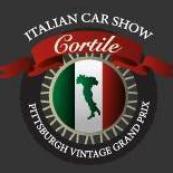 By 2007 a group of Italian Car enthusiasts prompted the Pittsburgh Vintage Grand Prix to showcase as Marque of the Year “All Italian Cars” . This included Marque of the Year Chairman, Bernard Martin, and Pam Martin, Chad Pcsoyler Ian Martin. The celebration in 2008 was so well received that the following year saw the founding of the Cortile Italian Car Show at the PVGP. Word must have gotten out about the resurgence of Interest in Italian cars because in June of 2009, Fiat Group and Chrysler Group LLC formed a strategic alliance. Consequently, Fiat has become the sixth largest car manufacturer in the world and it foretold the return of Italian marques Fiat and Alfa Romeo again being exported to North America. The Proiettore Macchina concept was introduced a the second year of the Cortile in 2010. Proiettore, in Italian, is the word for headlight. "Headlight" encapsulates our goal for Proiettore Macchina which is to shed light on the robust history of Italian motorsports and motorcars.
The Pittsburgh Vintage Grand Prix, presented by the Greater Pittsburgh Automobile Dealers Foundation, has a mission is to produce a world-class vintage racing event in order to raise funds that help provide residential care, treatment and support individuals with autism and intellectual and developmental disabilities in the Pittsburgh region through the Autism Society of Pittsburgh and Allegheny Valley School. Both of these charities play a key role in our success, supplying volunteers at all of our events.
Wayne Long, Chief Judge and Founder of the Cortile Cup has announced that he has selected a new Judge for the 2015 Cortile Cup Competition. Tom Frasca will be joining the judging team for the 2015 annual event at the Pittsburgh Golf Club on Saturday during the Pittsburgh Vintage Grand Prix.
 Prior to his acceptance of taking on the role of "Guidice Anziano" (Senior Judge) at this years Cortile Cup Competition, Tom developed a very robust resume. From 1969 through 1974 was a member of the SCCA and competed in Open Wheel & Sports Racing. He worked with Ferrari in North America on their racing team until 1994 and then served on the Architectural Review Board for Southeast New York. Design and engineering course through Tom's veins. In August of 2012 Tom created "Scuderia Ferrari Club of Denver" with the help of Gabriele Lalli, Piero Savazzi and Dr. Mauro Apicella of Ferrari GeS. This club had been in the workings since 2004 and is the only official sanctioned Ferrari F1 team club in North America. We are very honored to welcome Tom as one of our elite group of judges for the Cortile Cup. He brings a wealth of automotive experience in design and engineering. Be sure to stop by and pick his brain: He has some wonderful stories and is an encyclopedia of Italian Racing history that he quite literally lived through. 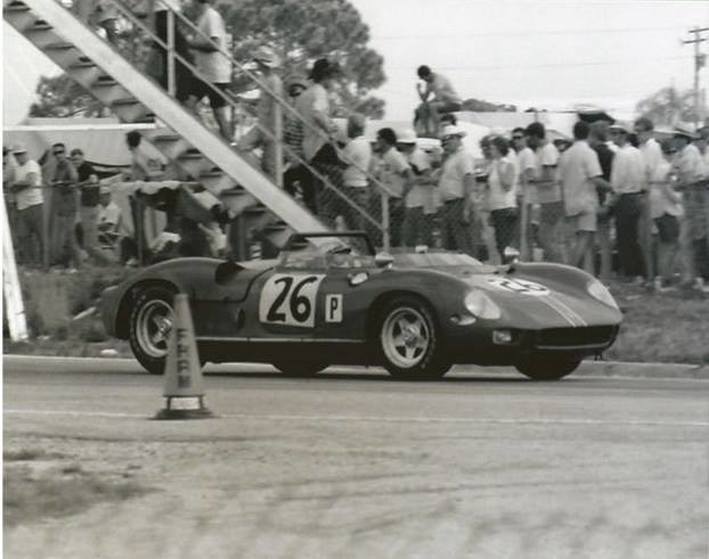 "This is Sebring 1969. This is 250 P # 0816. That was the car we had about a week to prepare for Sebring. Added "Lightweight" fiberglass rear deck and a three liter motor to comply with the new regs. Pedro and Chuck Parsons took it to a DNF in like the tenth hour. This after Pedro tried everything he could to break it so he could go home early." ~ Ted Johnson 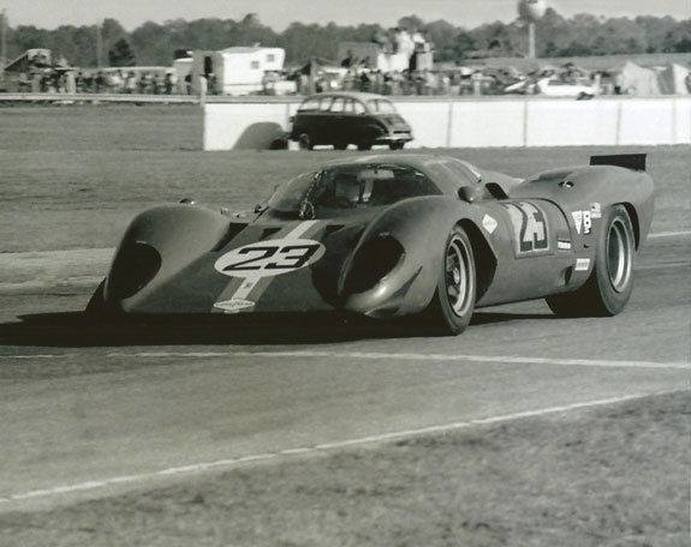 "Thanks Tom Frasca for the picture post of the NART 312P #23 I drove with David Piper at 70 Daytona 24 hr. It was my first Ferrari drive and what a great one to remember . We drove 5.5 hrs with NO water in the engine and finished 2 nd in class . The No. 24 was Michael Parkes and Sam Posey who won class. ~ CIAO Tony Adamowicz" 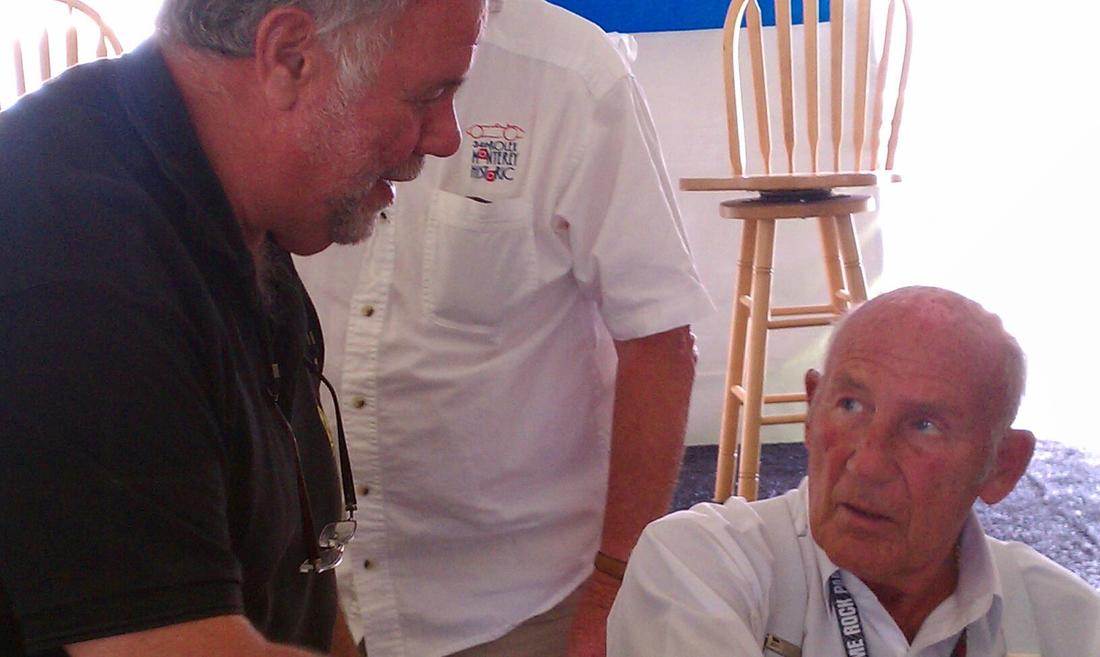 "Did you know Sir Sterling was a NART driver...the inaugural Daytona...1962: Phil Hill and Ricardo Rodriguez finish second overall in a Ferrari Dino 246SDP . Stirling Moss finishes fourth in NART Ferrari 250GT and wins S+5000 class. NASCAR star Fireball Roberts finishes 12th in a NART Ferrari 250GT." ~ Tom Frasca David Adams was of the "Best Lancia 2011" Cortile Cup Awards. This article originally appeared in the August, 2012 issue of Hemmings Sports & Exotic Car. A friendship forged over coffee leads to the heroic 6 1/2-year rescue of a rare, alloy-bodied Lancia Flaminia GTL Feature Article from Hemmings Sports & Exotic CarAugust, 2012 - Words and Photography by David LaChance
Had he lost his chance to buy the car? Dave Adams hadn't been able to make a deal with the owner of the decrepit Lancia when he first saw it; now, a year later, he learned that a group of prospective buyers were flying in from Europe, and were likely to take the car home with them. But the Europeans lost interest when they saw just how far gone the coupe was. Though it was rare, one of just 303 Flaminia GTLs built, it was literally falling to pieces, and had already been stripped of some of its parts. If Dave had listened to the experts' advice, he, too, would have forgotten about the GTL. But that's not what happened. When he learned the deal had fallen through, Dave didn't hesitate. "I gave [the owner] what he wanted and brought it home. I didn't know what I was getting into, or I might not have done it." Dave had first seen the Flaminia in 1999, when he went with a friend to look over a collection of Lancias at the Fiat-Lancia Parts Consortium on the outskirts of Pittsburgh, and the stylish coupe had caught his eye. "It was in very poor condition; most of the controls and the instrument panel had all been robbed out and sold for parts. And the car actually looked beyond restoration--it was buckled in the center and rusted out down underneath and the doors wouldn't open," Dave recalls. "But I'd never had a European car, and I just liked the idea of the aluminum body, the four-speed and three two-barrels." Yes, you read that right--Dave had never before owned a European car. In fact, he was sitting on a collection of Pontiac GTO project cars when he first saw the Lancia. "My wife fussed because I had so many [GTOs], and I hadn't restored any, because that's what I was going to do when I retired. And she was giving me heck, so I just sold all of them, and bought this one Italian car." It's also worth mentioning that he had never before restored a car, and that a hand-built car like the GTL, with its Superleggera aluminum-over-steel coachwork by Carrozzeria Touring, would be a challenge even to a seasoned restorer. But Dave had a number of factors in his favor: He doesn't discourage easily. He ran an auto parts store for 20 years. And he had found a mentor in an old-world craftsman named Dick Frye. Dick and Dave had met at Dave's store in Shelocta, Pennsylvania. "He was down there every morning, drinking coffee. I had free coffee. It drew in a lot of people--they'd stand around and BS. It was kind of a hangout." Dick had earned his skills at a Cleveland-area shop during the post-war years, learning about gas welding, lead filling and other techniques involved in European coachbuilding; he returned to Pennsylvania in 1958 to open his own shop. "My mentor, Dick Frye, told me that anything that was hand-built can be rebuilt," Dave says. "And these cars were hand-built. They took the frame and hand-bent each panel; a fender might be five or six pieces of aluminum welded together, and formed to create the car." The Flaminia, first shown as a prototype in 1956 and put into production the following year, was the successor to the successful Aurelia. Like the Aurelia, it was powered by a 60-degree V-6 engine, initially displacing 2,458cc, and growing to 2,775cc in 1962. The clutch and gearbox were rear-mounted, providing excellent balance. In addition to the Pinin Farina-styled Berlina, four Flaminia variants were produced: Coupes by Pinin Farina, Zagato and Touring, and a convertible by Touring. The GTL, a 2+2 version of the GT with a wheelbase that was 80mm longer, arrived in 1962. Dave has become an unabashed admirer of the entire Flaminia family. "That was like the Rolls-Royce of Italian cars," he says. "They didn't have the power that a Ferrari or a Maserati had, but as far as build quality, they were the best." Dave trailered the GTL home from the Fiat-Lancia Parts Consortium, but not before thinking to conduct a search of the shop's shelves, which turned up every one of the switches his car was missing. Then, he and Dick got to work. The aluminum skin was the first to go. "Dick and I cut the body in sections, because it's a one-piece body, and took the body off. I think we ended up with seven or eight pieces," Dave says. They used a cut-off wheel to slice the aluminum, and drilled through the hundreds of rivets holding the body to the steel structure below. It was at that point that Dave realized just how badly damaged the floorpan was. Had the discouraged Europeans been right after all? Not by a long shot. Dave knew that the Consortium had, among its other cars, a Flaminia Berlina that had suffered an engine fire. The bodywork was ruined, but the floorpan was solid. He bought the Berlina, brought it back to his shop and stripped it down. Putting the GTL's body on the Berlina's floorpan was no simple matter. The tubular steel frame that supports the coupe's body had to be transferred over, a job requiring a seemingly endless number of measurements. The Berlina was a longer car than the GTL, too, so Dick had to slice 2 1/2 inches out of the wheelbase. The GTL stored its spare tire in a horizontal well in the trunk, while the Berlina's was mounted upright. None of these required changes proved to be a roadblock, thanks to Dick's skill with the oxyacetylene torch. "If you get the right flux and the right torch, oxyacetylene will work," Dick tells us. "I try to put it back together the way it was built." "This new chassis, in addition to being too long, the inner fender wells were approximately two inches too wide," Dave says. "So we had to cut all of them off, and then Dick re-bent all the lips by hand. He was such a fanatic about it, that when we got to the final installation of the body, we didn't have to re-drill the rivet holes. It was close enough that we could pry or bend, and use all the original rivet holes." Before they could get to that point, there was much more work to be done. Dave sandblasted the chassis, using fine white sand. "I had a rotisserie on wheels, and I could wheel it in and out of my shop every day I went to work on it," he says. He primed the chassis in Rust-Oleum red oxide primer before applying 3M Body Schutz rubberized coating, for the original factory look, and finishing with black Rust-Oleum semi-gloss paint. "As far as preserving old metal, I feel that [Rust-Oleum] is one of the better products. "I'd halfway learned to spray-paint--I'm not a professional, but I believe in doing everything I can myself," he continues. What brand of spray gun did he use? "I can't even tell you--it was maybe a $29.95 one," he laughs. "A different body shop owner told me, buy a cheap spray gun to prime; when you're done with it or it acts up, throw it away and buy another one. He said it'll do as good a job as a professional gun. So that's what I did." Dave and his auto parts employees stripped the aluminum bodywork, using chemical aircraft stripper to avoid damaging the .030-inch-thick skin. They covered the stripper with plastic wrap and let it work for a half-hour or so, scraping off the softened paint with a rubber spatula. Though it's hard to believe from Dave's "before" photos, the paint was the original silver-gray finish. "The only original paint I found that looked good was up in under the dash. There was a little removable panel; I took that out, cleaned it off and that brought out the original color. I had that spectrographed and came up with what I wanted to paint the car." After Dick had used his hammer and dolly to erase all of the dings and dents in the bodywork, Dave brought the panels to a local shop that specialized in aluminum welding to have all of the small cracks and tears in the bodywork mended. Once the bodywork fit perfectly, the aluminum welder visited Dave's shop to stitch the panels back together again. Then came the final riveting. More welding was required for the steel frames of the doors, which had rusted away along the bottom. Dick removed the aluminum door skins, fabricated and welded in repair panels for the frames, and reattached the skins, annealing the aluminum with a BernzOmatic torch before hammering the edge around the repaired frame. Dave brought the Flaminia to Dick's shop for paintwork. It received a coat of etching primer, and small imperfections were filled in with Evercoat's Chrome-A-Lite lightweight filler. "I like the way it works," Dick says. "It doesn't shrink, and it blocks well." Three coats of high-build acrylic polyester primer were applied, followed by much block sanding. Dick chose PPG products for the basecoat/clearcoat finish. "I like their clears," he says. "They have buffability, and quick turnaround. You can water sand them the next day." He applied three coats of the base finish, and three coats of clear. Although two coats of clear would be sufficient, he likes applying the third coat, so that there's enough depth to allow future damage to be buffed out without having to repaint the car. The paintwork was done with all of the panels--doors, hood and trunklid--on the car. In the meantime, Dave had carried out whatever mechanical work was needed. He had rebuilt the braking system, as well as the starter motor, carburetors and other ancillaries of the V-6. Parts were ordered from Mike Kristick, an East Coast Lancia specialist. Dave put the engine on a stand and soaked the bores with PB Blaster and kerosene to get the pistons unstuck, but decided not to tear the engine down. "It fired up, and it's been running great ever since," he says. "I've probably only put a total of less than 1,000 miles on it." The gearbox, too, was left as it was, though Dave installed a new clutch kit. Dave ordered new leather from Hirsch Automotive Products, in the original red. "I told him I wanted the best leather I could get, the softest," he said. The upholstery was done by Larry Learn at Learn's Upholstery Shop in Indiana, Pennsylvania, who had come highly recommended. Though Larry suggested that he could save some money by having the seat covers machine-stitched, Dave chose to have the original hand-sewing recreated. New wool carpeting was installed, as well as new headliner, using matching material Dave purchased from Mike Kristick. The majority of the car's brightwork is either stainless-steel or aluminum, and could be restored back to its original shine. Dick used an English wheel to remove deep dents from the stainless-steel bumpers, which Dave then spent days sanding and polishing by hand. The transformation is amazing. "Like he said, anything that was built can be rebuilt," Dave laughs. He found a new-old-stock taillamp bezel for the driver's side, and is still looking for a replacement for its pitted counterpart. One of the Superleggera script badges was a Christmas present from a friend. Six and a half years after he had begun, the Flaminia was completed. Dave first showed it at the 2007 Le Belle Macchine d'Italia in the Poconos; he brings it to Italian car meets, where it's usually recognized for what it is, and almost always brings home a trophy. Not only does Dave have no regrets about the project, he's since found himself a second GTL, a two-owner car that was in sound running condition when he bought it from a West Coast president of the American Lancia Club. "I'm doing the second one now because I have two granddaughters, and they're both going to have a GTL and a Flavia Pinin Farina coupe," he tells us. "I figure I'll have them done when they're old enough. If they decide to sell, well, they're marketable, and they'll have college money. "On the second one, I'm being a little fussier. I told my wife, the first one came out good; the second one will be perfect." This article originally appeared in the August, 2012 issue of Hemmings Sports & Exotic Car. |
AtributionThis is a compilation of articles from a variety of sources and contributors. Attrition and sources are always provided at the top and/or the bottom of the posting. Archives
June 2024
Categories
All
|
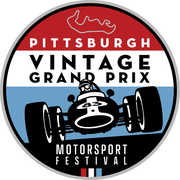
The Pittsburgh Vintage Grand Prix Association is a federally registered 501c (3) non-profit organization with a mission to hold a world-class vintage automotive race event for charity.
Since 1983 this volunteer-driven event has raised over $6 million to benefit autistic and developmentally disabled individuals through the Autism Society of Pittsburgh and Allegheny Valley School. The Pittsburgh Vintage Grand Prix remains North America's largest vintage race event, the only one run on city streets, and the 8th largest car show in the World. |

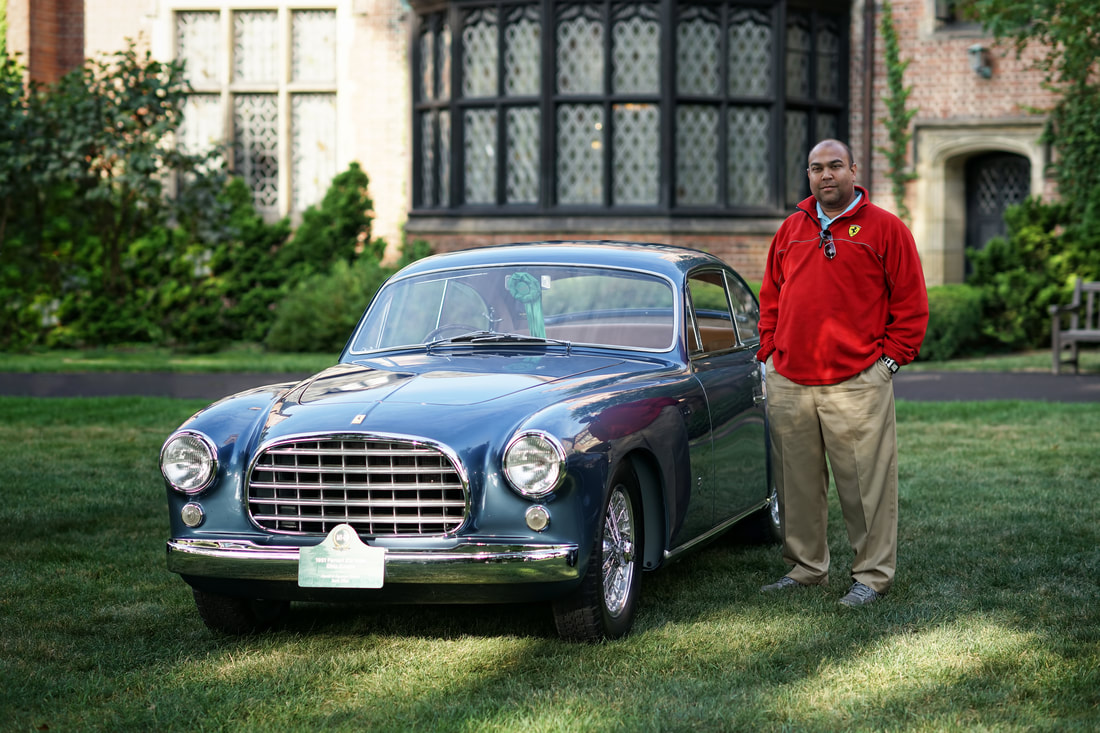
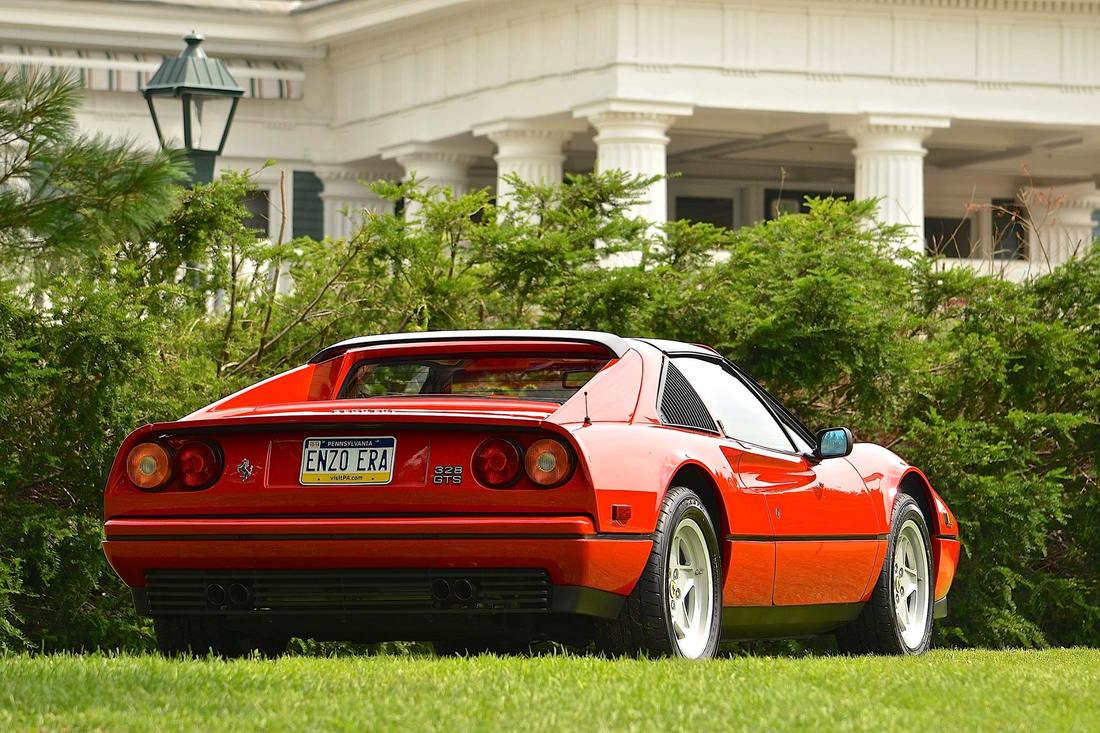
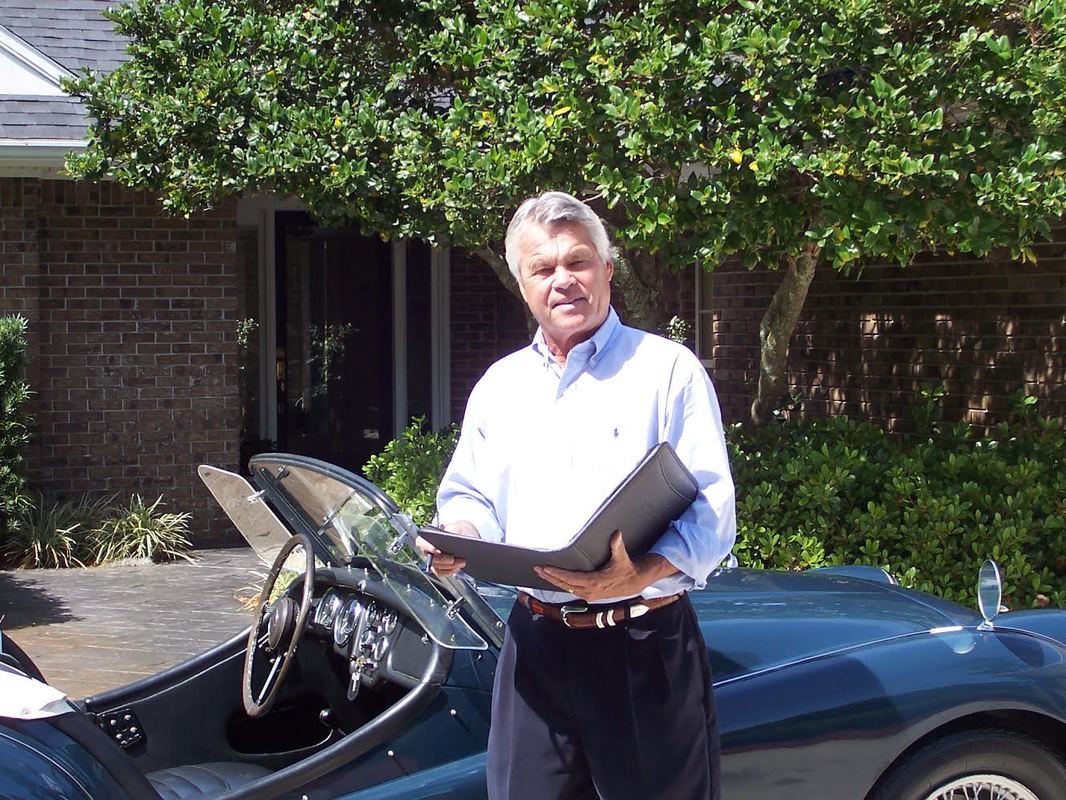
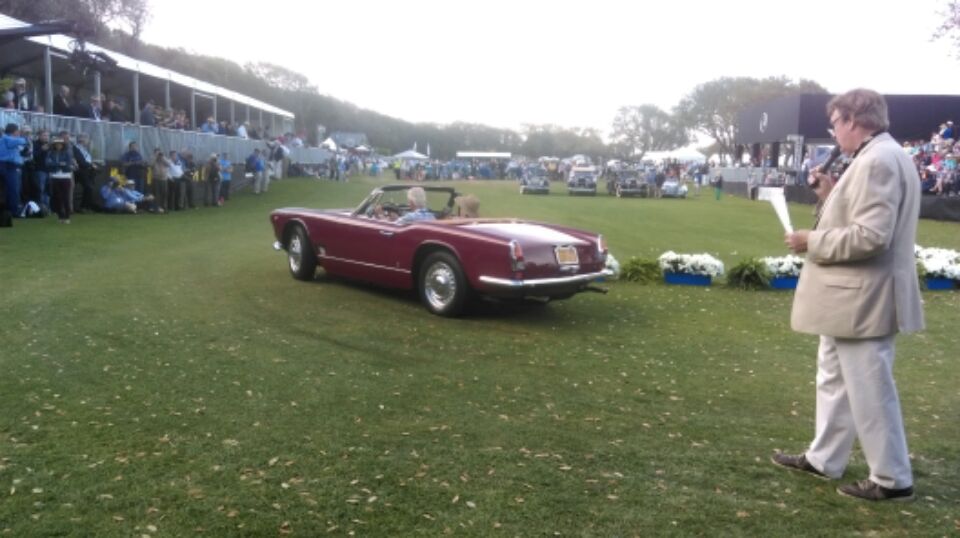
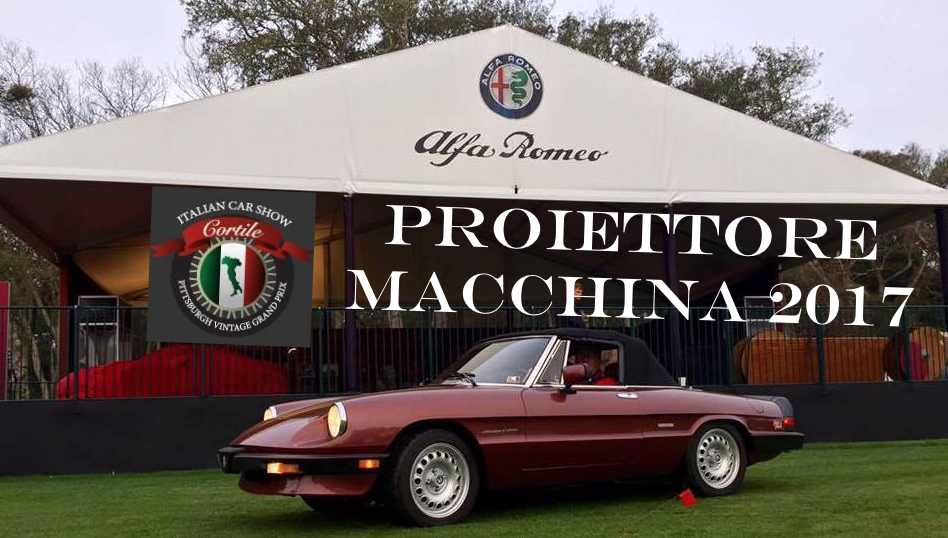
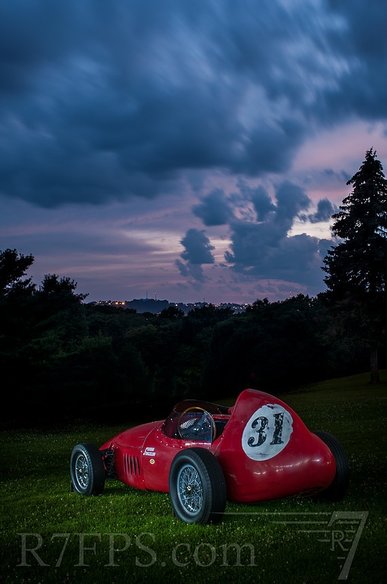
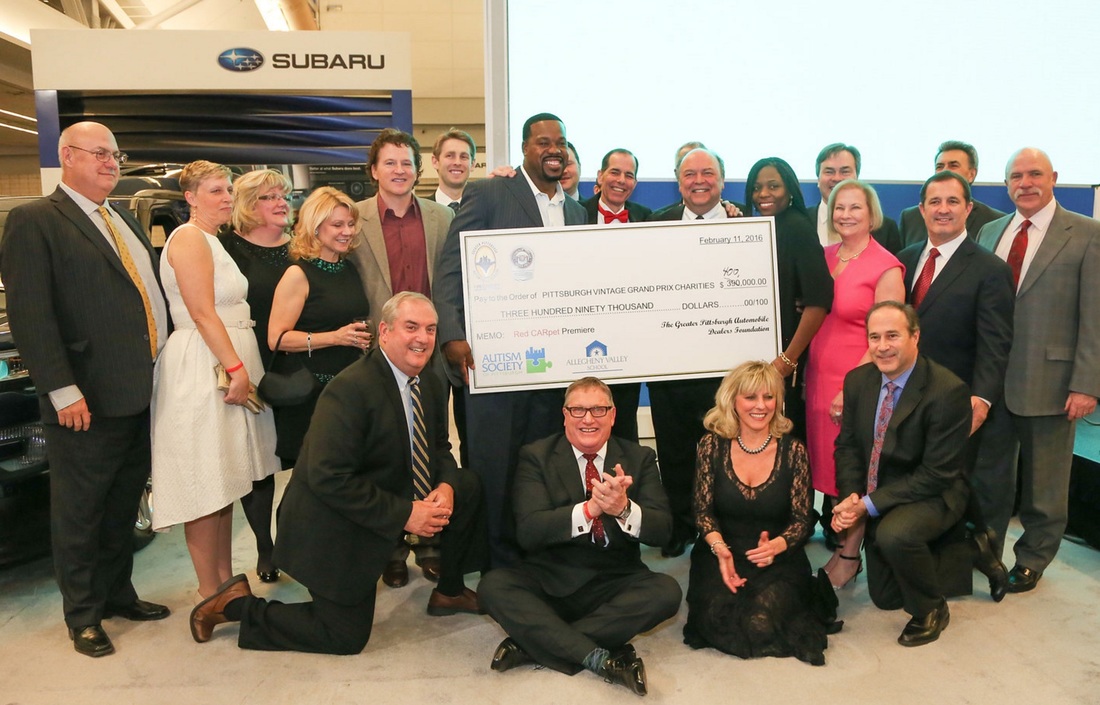
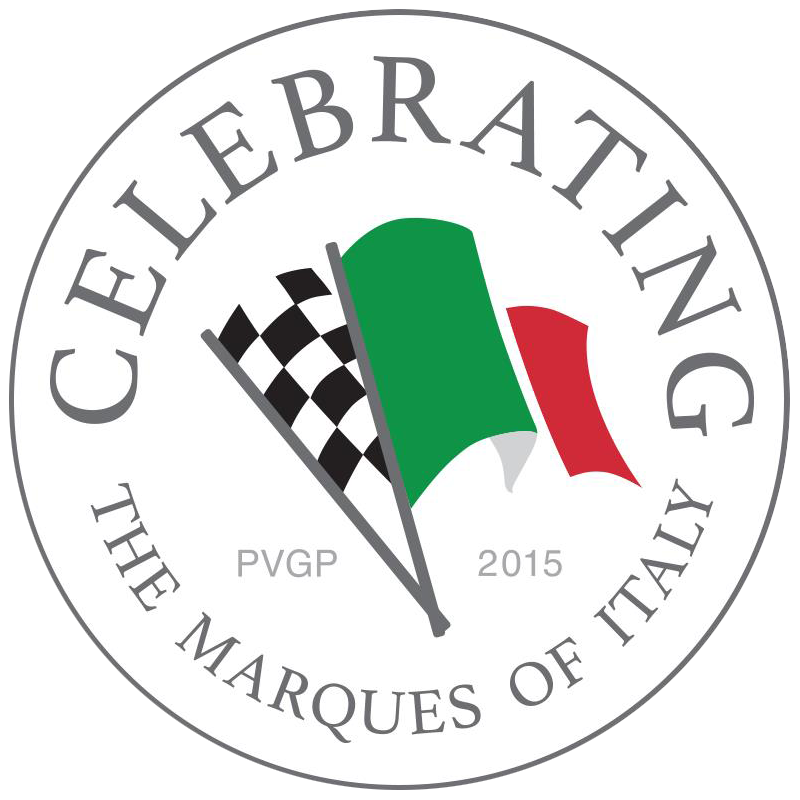
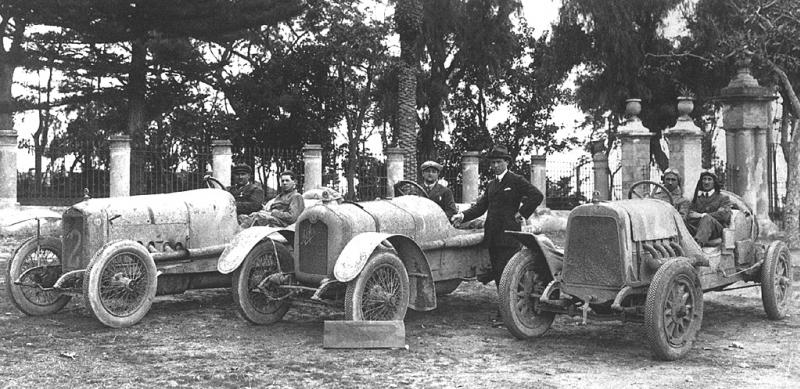
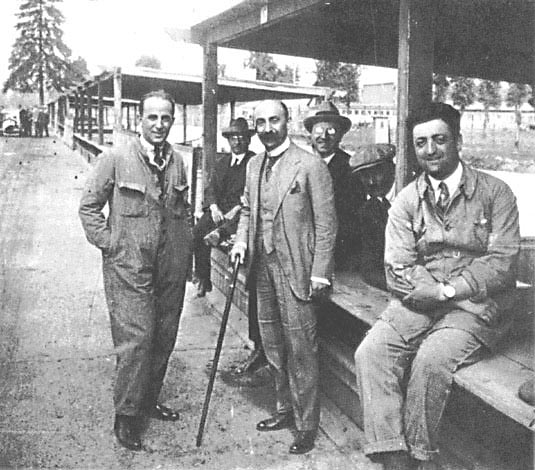
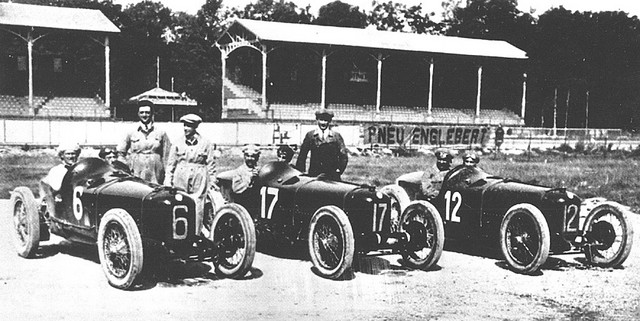
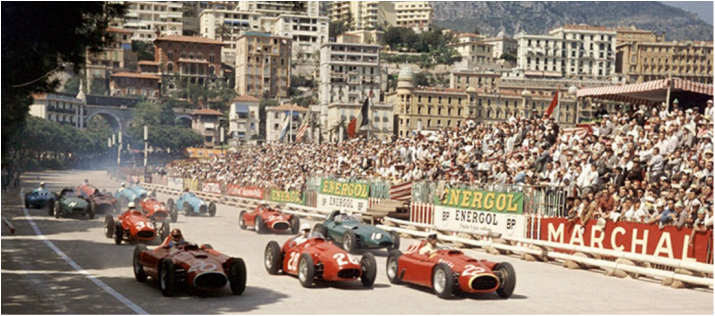
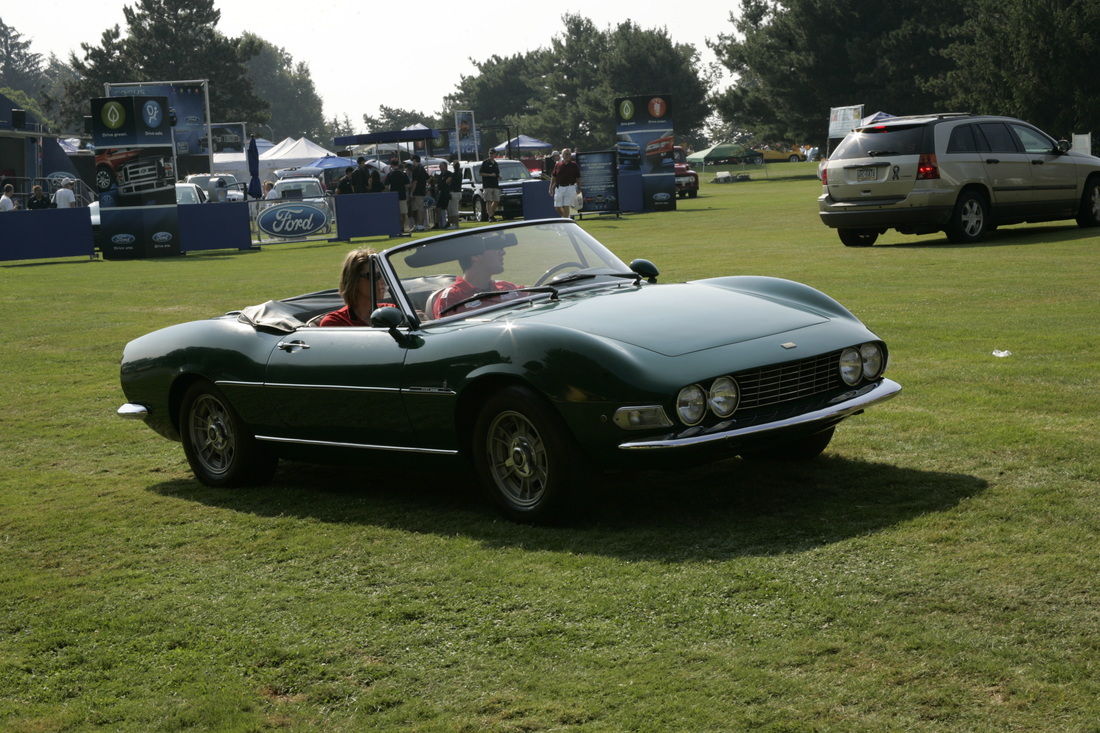
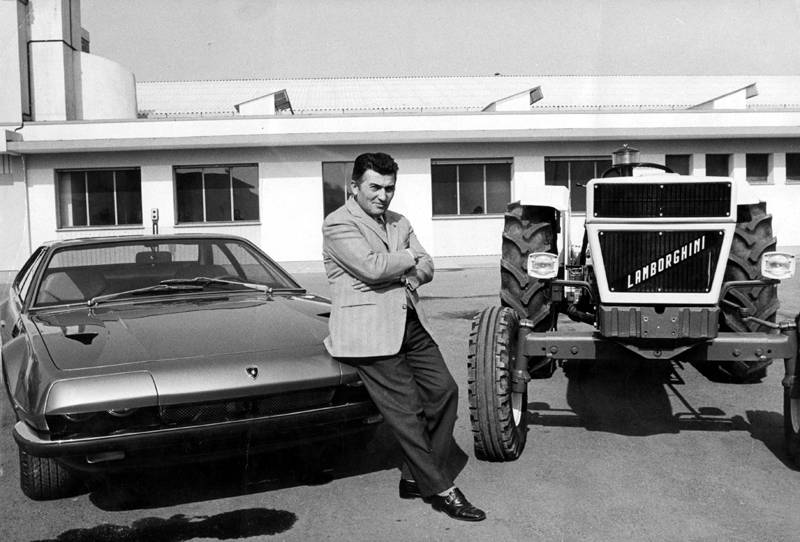
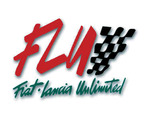
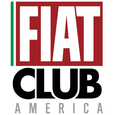
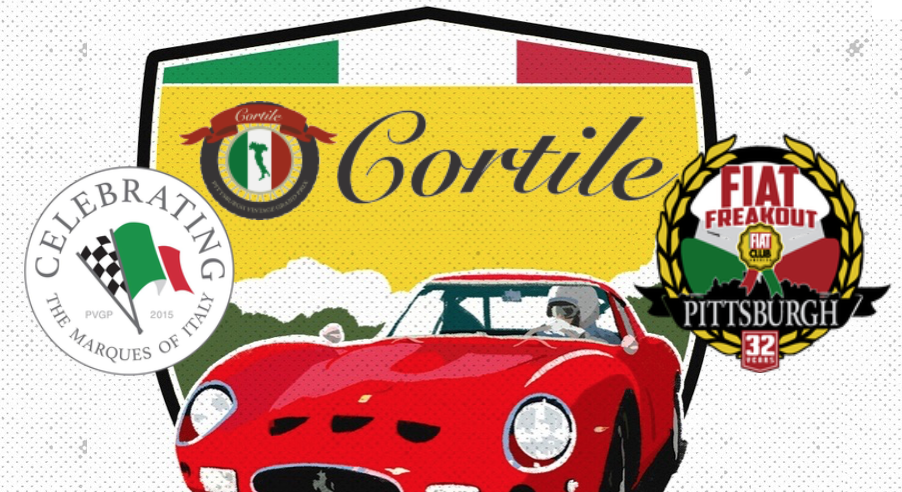
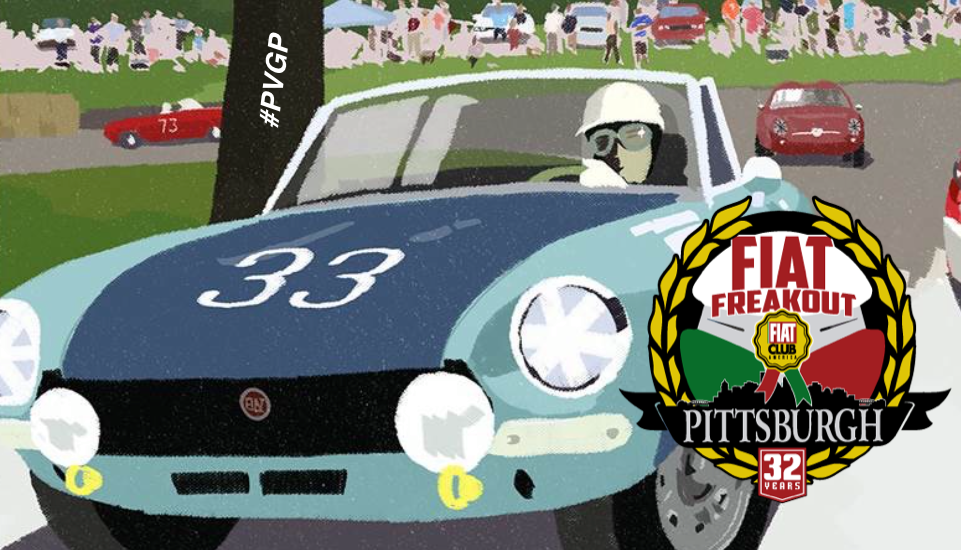
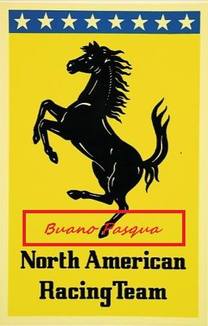
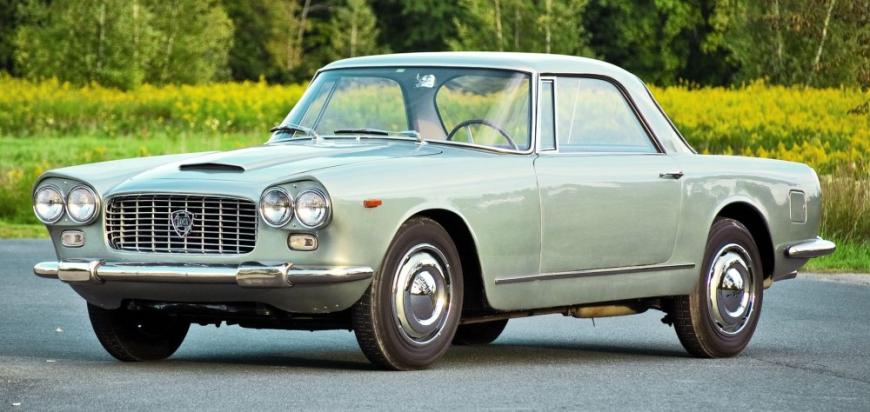
 RSS Feed
RSS Feed